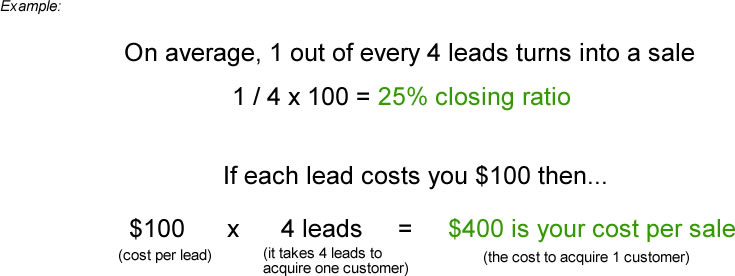
If you’re running a 7-figure business, you probably know a thing or two about marketing. After all, you don’t create a million dollar company without attracting a new customer or two.
But attracting new customers isn’t everything.
Even if you’re constantly pulling in new customers and clients, you may find that your business is struggling to stay profitable.
This is because you’re probably not properly measuring the success of your marketing.
Many companies see that they’re attracting new leads and believe they’ve created a successful marketing strategy. Unfortunately, if your marketing isn’t cost effective, you’ll quickly go under – no matter how many new leads you attract.
Monitoring the right marketing metrics is crucial for creating a strategy that profitably grows your company. To ensure you’re developing a full understanding of what numbers you need to be tracking, here are three of the most important metrics you need to know.
3 Marketing Performance Metrics You Should Be Monitoring
1. Cost Per Lead
For a business of any size, attracting a new lead is exciting. When you’ve gained the attention of a new potential customer, it feels like something to celebrate. You’re one step closer to making a sale!
Unfortunately, not all lead generation outcomes are ideal. While you need to attract new leads in order for your business to stay afloat, you also need to make sure your cost per lead is efficient.
Cost per lead tells you how much money you’re spending to attract a new lead. In order to find your cost per lead, you want to take your marketing spend and divide it by the number of leads you generated with that investment.

Identifying your cost per lead is the first step in determining if your marketing efforts are profitable.
You’ll want to identify your cost per lead for each marketing channel you’re using. For example, if you’re running a Google AdWords campaign, you’ll want to track how many leads you’re attracting from that channel and how much it is costing you to get their attention.
Let’s say you spend $100 on a Google AdWords campaign, which helps you attract one new lead. In this example, your cost per lead would be $100. In other words, you spend $100 and attract one new lead. If you spent that same amount but attracted two new leads, your cost per lead would be $50.
2. Cost Per Sale
When you’re looking to attract new leads, it’s important to keep in mind that not all of them will become a new customer. Understanding how much you’re spending to attract those leads is important, but your cost per lead does not equate to your cost per sale.
To better understand how much you’re actually spending to convince a new customer to buy, you need to know your cost per sale. Your cost per sale tells you the average number of leads you need to attract in order to make one sale. This may also be referred to as your closing ratio.
To find your cost per sale, you want to look at the number of leads you have versus the number of sales you have. For example, if you attract four new leads from your marketing strategy but only one of them purchases, you can conclude that it would take an average of four leads to get one new customer. This would give you a closing ratio of 25%.
This metric allows you to see how many leads you need to attract before you gain a new customer. With this information you can find how much it’s actually costing you to get a new sale.
Let’s go back to the example where you attracted one lead from spending $100 on Google AdWords. If you know that you need to attract four leads in order to make a sale and each sale will cost you $100 on Google AdWords, you’ll need to spend $400 to get a new customer.

It’s important to acknowledge how your cost per sale and cost per lead work together. If your cost per lead is low but your cost per sale is high, then that may be a sign you’re attracting unqualified prospects or leads. You may need to shift your marketing strategy or channel to attract stronger leads who are ready to make a purchase.
3. Profit Per Sale
The last metric you’ll need to understand is your profit per sale. While you may be sitting there wondering what profit margins have to do with marketing, it’s important to know whether or not your marketing results are sustainable for your business.
Your profit per sale will tell you how much money you’re bringing in from a new sale. It allows you to compare the amount you’re spending to attract a new customer with the amount of profit you’re making from that new sale.
To find your profit per sale, take a look at the amount you’re spending to attract a new customer. Remember, we found this by multiplying the cost to attract one lead by the number of leads you need to collect to get one customer. In our past examples, your cost per sale was $400.
Next, you want to consider the item your new customer is purchasing. If they’re buying a product or service that would bring in $800 of gross profit, you would be left with a profit per sale of $400 after subtracting your $400 cost per sale. However, if they’re purchasing a product or service that only has a $400 gross profit, you’d be left with a $0 profit per sale – giving you no room to grow.
Your profit per sale allows you to see whether or not your marketing is sustainable. If your profit margins aren’t large enough, it doesn’t matter how many new leads and customers you’re bringing in. You still won’t be able to keep your head above water.
Piecing These Marketing Metrics Together
Independently, each of these metrics are important, but they really start to take shape when you look at how they work together. When you understand how your cost per lead, cost per sale, and profit per sale all connect, you can develop a stronger, more efficient strategy for your business.
Many companies believe a steady stream of new leads is all they need to be successful. They focus on attracting as many new audience members as possible, but never really consider whether or not their cost is efficient for their business.
After a few months, they’re strapped for cash and wondering why they’re not succeeding.
If you want to create a marketing strategy that will truly allow your business to grow, keep these three metrics in mind. When you know your cost per lead, cost per sale, and profit per sale, you can profitably scale your marketing and grow your business.


